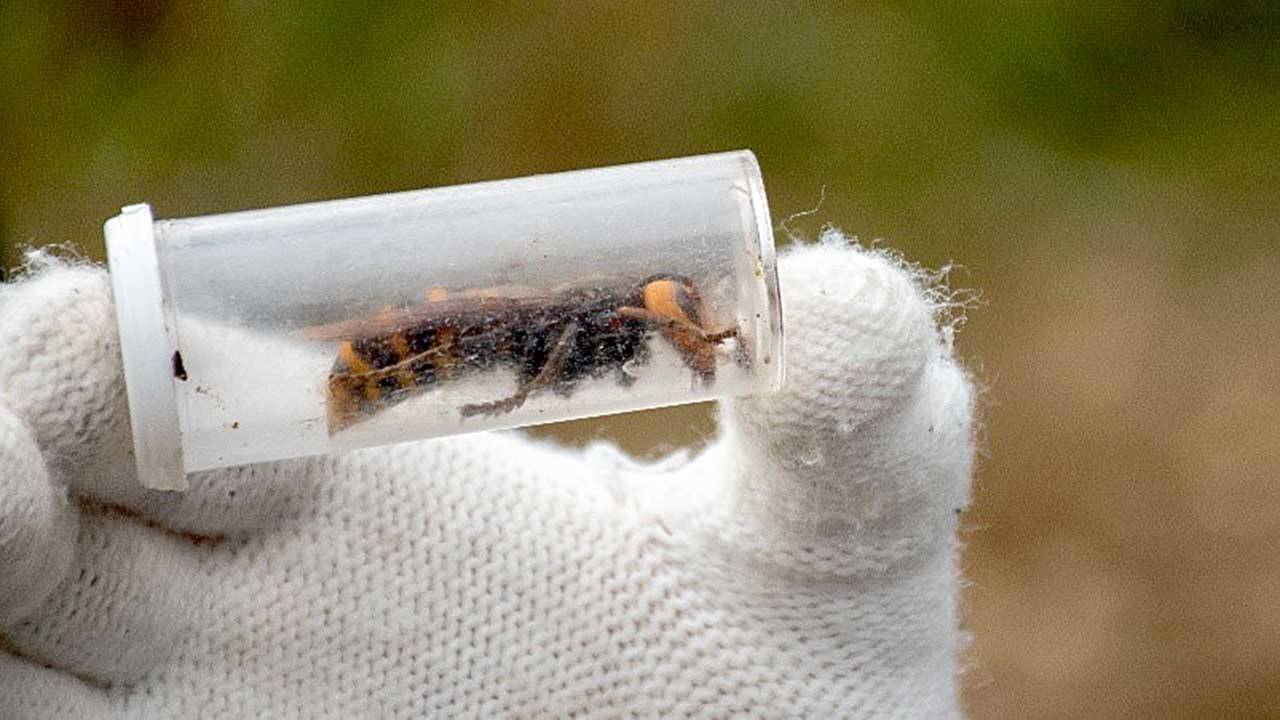State Department of Transportation work crews will begin placing traps for murder hornets in Northwest Washington counties, including Clallam and Jefferson, in July.
The traps, which will be monitored by DOT workers with results reported to the state Department of Agriculture, are to help state officials know if the huge hornets have spread from where they were originally found in Whatcom County.
“This is part of the Department of Agriculture’s overall focus on trapping in Whatcom, Skagit, Island, San Juan, Jefferson and Clallam counties,” according to a DOT blog published Wednesday.
“The plan is to have at least 1,200 traps in place across the state between all agencies and citizen scientists, along with working with cross-border agencies in British Columbia to track the hornets.”
Murder hornets, more properly known as Asian giant hornets or Vespa mandarinia, is an invasive species of hornet from Asia. The non-natives can dominate local species and pose a serious threat to Washington honeybees, DOT said.
They are not typically aggressive toward human beings, but their stings are very painful and can leave permanent scars.
Murder hornets look different from the hornets generally seen in Washington state.
They are 1 1/2 to 2 inches long, have large orange heads with prominent eyes and black-and-orange/yellow-striped abdomens.
They live in large colonies and usually nest in the ground.
Traps are relatively simple to make, the DOT blog said. They are made of a plastic bottle and such ingredients as orange juice, rice wine or brown sugar. The traps are placed at least 6 feet high on trees near forest edges.
DOT crews will check them as they perform their duties and report them to the state, the blog said. Those interested in working as citizen scientists can contact the state Department of Health.
Anyone who sees a suspected murder hornet is asked to report it online at agr.wa.gov/hornets, via email at hornets@agr.wa.gov or — if you do not have access to email — by calling 1-800-443-6684.
If it’s safe to do so, photograph it and send the photo also.
If possible, put the specimen in a jar or baggie in the freezer until contacted. But handling these hornets can be dangerous. They have been known to sting people who have attempted to do so. They also will defend their nests or beehives they are attacking, so people are urged not to swat them and instead focus on reporting them.
Check the state Department of Health for information about what to do if you are stung.

